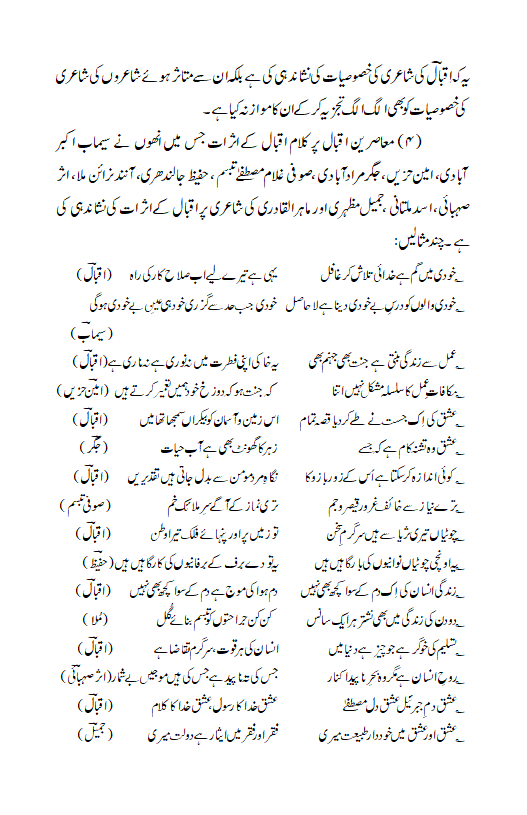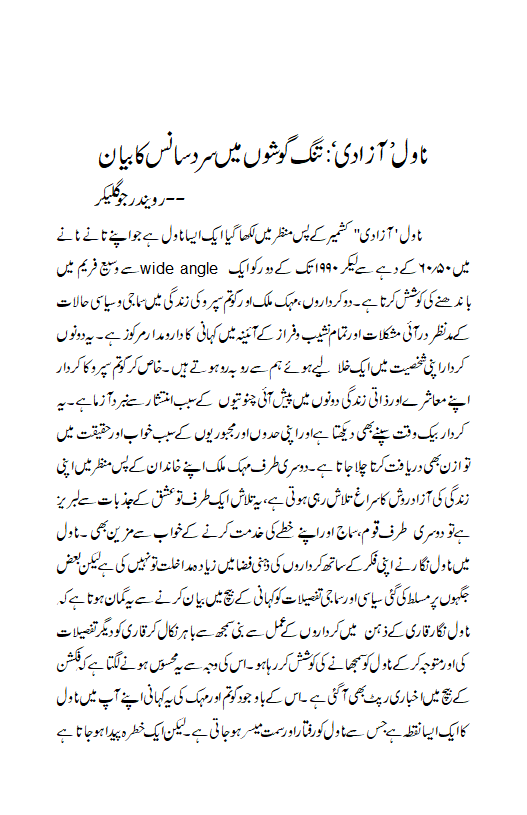Thursday, February 29, 2024
Wednesday, February 28, 2024
Tuesday, February 27, 2024
Saturday, February 24, 2024
Thursday, February 22, 2024
Wednesday, February 21, 2024
Tuesday, February 20, 2024
PAKISTAN’S INVASION ON J&K (1947-48) - UNTOLD STORIES OF VICTIMS, Author: Dr Ramesh Tamiri; Book Review: Deepak Budki
PAKISTAN’S INVASION ON J&K (1947-48) - UNTOLD STORIES OF VICTIMS
Author: Dr Ramesh Tamiri; Book Review: Deepak Budki
The book titled, ’Pakistan’s Invasion on J&K (1947-48)-Untold Stories of Victims’ is a well-researched and authentic book on the trials and tribulations undergone by Hindu and Sikh communities at the time of partition more so in the areas now under the illegal occupation of Pakistan. The book is divided into five parts besides the introduction i.e. Pakistan Invasion, Muzzaffarabad District, Jammu Region, Baltistan and Gilgit Region. As is evident the happenings in each sector have been separately dealt with.
The author, Dr Ramesh Tamiri is an ophthalmologist by profession who developed an interest in literature and later in history focussing on his own state. While studying literature he was enamoured by famous Urdu short story writer, Sa’adat Hasan Manto, who has written many captivating stories about partition and has been translated into Hindi and English as well. While learning History Tamiri had to study a large number of books on history and research methodology. He belongs to Kashmir and was forced to migrate from the valley to Jammu in 1990 by the Jehadi wave that swept the valley and resulted in persecution and exodus of his community from the valley. His first book was titled, ‘Painting and Theatre in Kashmir; Suraj Tiku’s Journey’ which encompassed the life and works of the great watercolour painter from Kashmir. The book also contains many photos of paintings by Suraj Tiku. The present book is the fruit of 23 years of his research on the subject comprising the study of innumerable primary and secondary resources, the collection of oral evidence and as many as 450 interviews. Though no eyewitnesses were available yet information was collected from people who were related to people killed or imprisoned during that period and had heard stories from them. Moreover, the book contains many rare photographs of people who faced persecution at the hands of the Pakistan army and the tribals (Qabailis). Many of these photographs depict the pain and suffering the people in the area went through.
-2-
As per the author, Pakistan’s objective was complete ethnic cleansing of the minorities living in the areas conquered by them resulting in the killing of 38,000 Hindus and Sikhs besides plunder and rapine. On the contrary, the Indian and J&K Governments had prior knowledge about the attack planned by Pakistan on Jammu & Kashmir state but they turned Nelson’s eye towards it. Pakistan had meticulously prepared several alternative plans and plotted to kill the Maharaja of J&K before October 27. M A Jinnah and Liaqat Ali Khan were very much aware of the situation, and so were General Gracy, Sir Francois Mudie Governor of Punjab, Sir George Cunningham and General Messervy. The British Officers in charge in different areas collaborated with the Pakistan Army. They planned to induce desertions of Muslim soldiers in the J&K army, secure voluntary recruits amongst the retired personnel of INA and J&K Army and arouse Kashmiri Muslims in different areas through religious indoctrination for internal disruption, violence, killings and looting besides abduction and rape of innocent women. Conversion of surviving non-muslims in the areas under their control was also carried out. Even the doctors were not at times spared though the Pakistan Army often called for their services. In Shigar the Pakistan Army had sought the services of a doctor from the Kashmiri Pandit community which was put in verse by Mrs Tiku in a satirical way because Muslims eliminating Hindus wanted a Hindu Doctor to save their lives. The verse was recalled by her daughter Indira:
Pakistan aav order, (Order received from Pakistan)
Gatchi aasun Doctor; (We need a doctor)
Drav mazhab futraevith, (He went ignoring his own faith)
Haal baevith kus haekha. (Wo do I narrate my woes)
The bodies of victims, dead or alive, were thrown into Kishen Ganga and other rivers flowing in such areas. Even after the ceasefire was announced Pakistan army disregarded all international covenants on the treatment of POWs and refugees. Unfortunately, their plan was facilitated by the low-density dispersion of J&K forces all over the state which the J&K Army Officers had knowingly engineered before deserting the army.
Nevertheless, the rest of the J&K forces who continued to hold allegiance to the Maharaja though in small numbers and the Sikhs put on a great resistance against the bestial tribal raiders as revealed by
-3-
Sachwant Singh of Kotli. Brig Gansara Singh fought valiantly in Gilgit till his capture by Pakistani forces. Many Sikhs preferred drowning to conversion. Pakistan Army sent Pakhtoon tribal raiders called ‘Qabailis’ in common parlance to make advances into J&K territory and conquer as many areas as they could. Temples especially the famous Sharda temple, Gurudwaras and Havelis were targeted by them since non-Muslims took refuge in such places. Logistics especially supply of arms and training were ensured by the Pakistan Army. The Pakistan Government on the other hand enforced an economic blockade on J&K
which resulted in a total scarcity of salt in the valley despite the standstill agreement.
It is also evident from the book that Maharaja’s delay in signing the instrument of accession and opting for a standstill agreement with both India and Pakistan ultimately proved a disaster. The situation was further worsened by Nehru’s reluctance, later on, to accept the request of Maharaja for accession to India because of his insistence upon making Sheikh Abdullah a party to the accession and transfer of power to the latter without any conditions which caused an unprecedented delay in the matter. Had the request been accepted as and when received and the Indian army despatched in time, J&K would not have seen the colossal bloodshed that was eventually witnessed. Worse still, going to UNO and accepting a premature ceasefire when more than half of J&K besides Gilgit-Baltistan was under the illegal occupation of Pakistan was a Himalayan blunder. The part of J&K remains with Pakistan known as POK.
The violence in Poonch started as early as August 1947 in which ex-servicemen were involved and a regular attack was launched on 21-22 October 1947 which instantly spread all over the western border right up to Baramulla. Col Akbar Khan alias General Tariq was in command of the tribal raiders which included Sudans of Poonch and Rajputs of Mirpur. The areas affected were Muzzaffarabad, Mirpur, Kotli, Basnade, Dera Amborje, Naluchi, Kohala, Ramkot, Domel, Radoo, Geru, Rajouri, Thanamandi, Budhal, Dandakote, Chattibatti, Chasna, Sanote, Daraji, Gangauti, Skardu, Khaplu, Shigar, Drass, Leh, Gilgit, Astore, Bhunji, Chillas etc. There were thousands of Hindu and Sikh merchants in these areas. Kashmiri Pandits were mostly employed in State
-4-
Government offices such as revenue, excise, education, power, police and the army. The majority of locals helped the raiders and indulged in arson, loot and plunder of the hapless Hindus and Sikhs. In Ladakh people especially the Young Men’s Buddhist Association put on a brave resistance against the invaders.
It was only on 27 October 1947 that the Indian Army landed in Srinagar and advanced towards Baramulla making the tribals, who had by the time reached Shalteng at a distance of 20 kilometres from Srinagar city, retreat. The raiders had aimed to take control of the Airfield. Besides
thwarting their aim, the Indian Army fought many battles during their advance.
The USA and the UK took a keen interest in the Kashmir issue and backed the Pakistan side as they had a vested interest in retaining hold of the Gilgit agency to contain the influence of the USSR. Mr G K Reddy, the then correspondent of ‘Kashmir Times’ exposed the developments at that time. He was fortunate to escape to Mumbai later. Many Kashmiri Pandits had unflinching faith in the local people as is seen by their reply to B N Sapru’s suggesting they leave their homes before Pakistanis come, “Last time when Kabayalis came, the villagers kept us in their homes.” Eventually, betrayals by locals were reported e.g. in the case of B N Sapru betrayed by G N Wani, the guide. In Rajouri Lala Anant Ram Kaila & his son Dr Virender Kumar Gupta had a narrow escape. Many Hindus and Sikhs poisoned their families before facing raiders or drowning themselves in the rivers nearby.
The clouds, however, had a silver lining too. Sheikh Abdullah’s supporters did not cooperate with the raiders and saved many non-muslims. Similarly, some conscientious Muslims rescued many Hindus and Sikhs and helped them cross over to safer areas even at the risk of their lives. Thekedar Abdul Aziz of Dutiyal Camp and Sonaullah Dar proved messiahs for them. RSS played a great role in arming poor Hindus and Sikhs for self-defence and rescuing many of them, especially in areas like Rajouri. Finally, after the Nehru Liaquat Agreement exchange of POWs and civilian hostages took place from May 25, 1950 onwards. Red Cross society, too, rescued many people and repatriated them to India through Wagah and Ferozpore. Kashmiri Pandits who reached Kashmir had to face unthought-of situations. Many of them had
-5-
been suspended and salaries were not given to them. A few of them were not given their jobs back on the pretext that they had absconded from their duties. In one case Sheikh Abdullah had to intervene personally since he knew the man himself.
In a nutshell, the book is an authentic reference document about the events that happened in J&K state at the time of partition in 1947 especially the persecution of the Hindu and Sikh community which could have been avoided had Maharaja and the Indian Government decided in time. For the collection of the data, the author has put in a lot of hard work which is appreciated. My sincere good wishes to the author.
***************

































.gif)
.gif002.gif)
.gif003.gif)
.gif004.gif)
.gif)
.gif002.gif)
.gif003.gif)
.gif004.gif)
.gif005.gif)




.jpg)
.gif)
.gif002.gif)
.gif)
.gif002.gif)
.gif003.gif)
.gif004.gif)